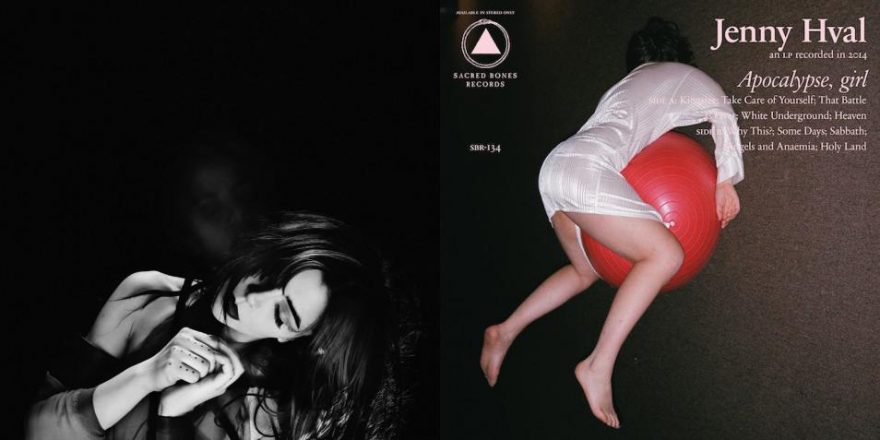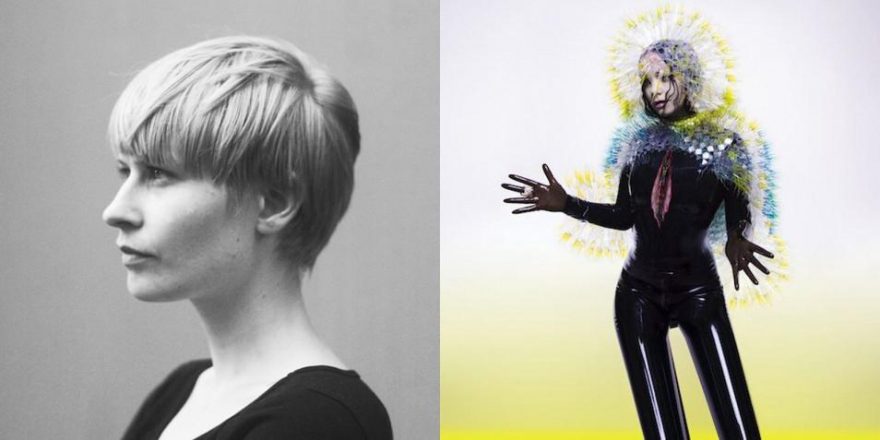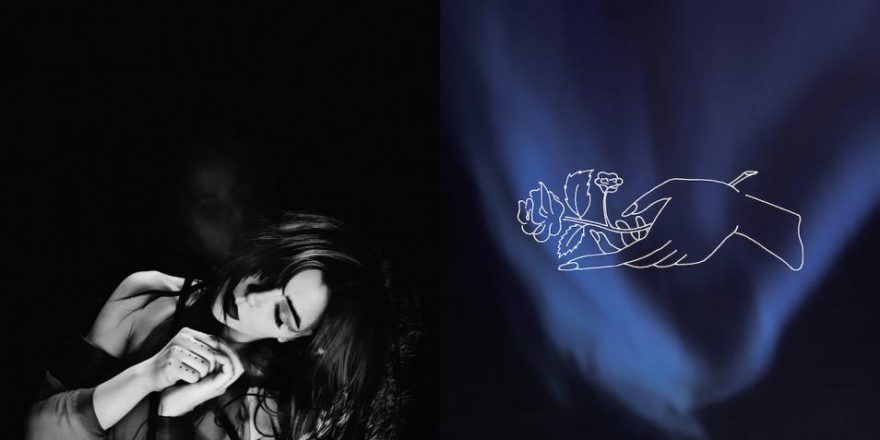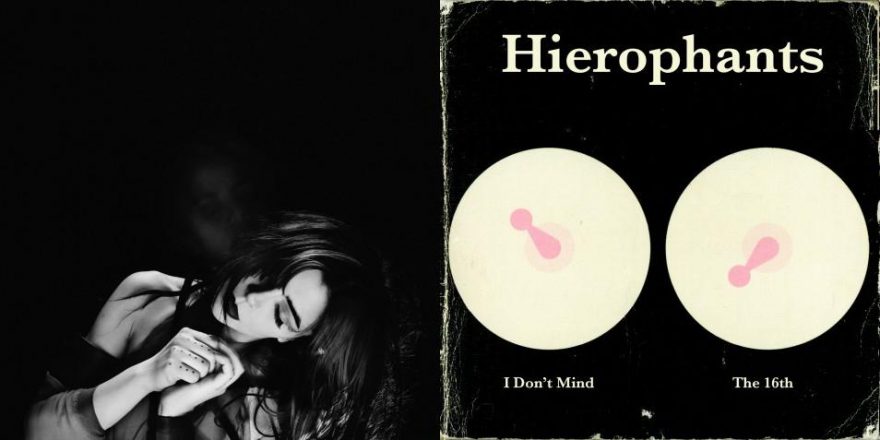I have an “I’d prefer not to hear about your dream last night” policy. (Unless you’re convinced it’s some kind of prophetic vision or you incepted me.) These types of interactions are more like monologues with a handful of asides recalling the wild imagery of the mind’s eye with so much seriousness, only to land at the inevitable “that’s wild, right?!”
I’ve never approached dreams holistically, as if my subconscious were a David Lynchian head writer of a nightly soap, toiling over a narrative to dazzle me with later. My understanding is that my subconscious is cleverly spitting up all the “deal with this later” files I’ve buried down in the valley of somatic instructions. All that stuff it’s pushing up — be it people, demons, memories, emotions — is finding its way out of the maze and is holding court with the subconscious.
You’ll have to forgive me. I haven’t slept in two days, and all I’ve been listening to has been Jenny Hval’s Apocalypse, Girl. Try to stay with me here.
The most amazing stuff comes out of that push-and-pull of the conscious and subconscious — stories that don’t need a linear narrative and that leave gaps between what is shown and what is tucked away, giving you the freedom to fill in those gaps with your own experience. It makes the work resonate in a deeper way. This style is inclusionary and explores a space more expansive and unknowable than what’s beyond the sky — the human psyche.
Anyway, I first heard about Jenny Hval last year from my friend Maya. She mentioned Sacred Bones was going to release Hval’s new album, and I made a mental note to look out for it. On the first listen to Apocalypse, Girl, I was completely gripped. The first track, “Kingsize,” is part ASMR (for the uninitiated, ASMR stands for Autonomous Sensory Meridian Response, which is a fancy way of saying “hypnotizes easily”) and part gateway to lucid dreaming via binaural beats with a pinch of OK Computer-isms. There’s a divine, delicate percussive sound on the Ks and Ps at the end of words, and the intimacy created by the audible sounds of a mouth closing and shutting activates my ASMR. By the time “That Battle Is Over” went into the second verse, I had completely faded into a lovely sleep — which is amazing, because I’ve been struggling with sleep anxiety for as long as I can remember. That is how I found the ASMR in the first place — so desperate for sleep that I pulled my laptop into bed and searched for “hypnosis wheel.”
It took years for me to embrace all of these psychological and neurological phenomena. Even in a circle of outsiders, asking someone if they see color when listening to music that moves them, or if they get tingles on the top of their heads during eye tests, or explaining what a “scintillating scotoma” is, will inspire a lot of uncomfortable silences. The first time I experienced amusia/synesthesia/the blinding fucking light/searing pain that I’ve been lucky enough to have since was when I was seven years old was while watching the Sound of Music (1965). All of a sudden there was this flash of light, like a lightning bolt, but it was disorienting and frightening because it was internal; I’ve described it as a storm turned inside out. It’s what much of my old album (with my old band) Glass Prayer is about. I went into full panic-attack mode. I told my mother I was going blind or dying. I then realized Julie Andrews was singing something vaguely familiar but distorted in the background — the sound of the music (ha!) had taken on a metallic shape and an intensity akin to early Einstürzende Neubauten. It then occurred to my mother that I might be having a migraine.
From then on, I could no longer relax. Things took a turn for the worse when, while deep in a dream, I noticed I was experiencing aura symptoms. Even sleep was no escape. I was flummoxed and upset but also really amazed that the mind’s eye was that powerful. It was like a movie screen behind my eyes, and the migraine loaded up the film. In the nocturnal cases, the headache would be in full swing by the time I woke up. And waking up became an entirely different monster — there were times when I couldn’t move my body. It is how I imagine hell: not this place of “Oh God, my skin is melting,” but hell as the death of the body yet never the loss of awareness; an eternity in darkness, with only your thoughts. That is what migraines with distorted perception and loss of control while you’re at rest will do — create crippling anxiety.
Several appointments with neurologists not as awesome as Oliver Sacks later, I was just as much in the dark as I ever was about what I was dealing with, beyond being told I should avoid bananas. The amusia and blinding light were mysteries, and this was just going to be a part of the rich tapestry of my life, a nauseating, unpredictable, painful distortion that imposed itself on all of my decisions.
I think my brain’s predilection for misconduct gave me a case of Stockholm Syndrome, because the more hyperaware I was of the fact that I had a Windows 95 operating system of a brain, the more fascinated I became with understanding it and with loving art that expounds on it. I’m not complaining — although the pain sucks, I love feeling the physical connection to sound. And that’s how I’m getting back to Jenny Hval. (She doesn’t operate in a linear fashion, why should I?)
On the whole there’s for sure a Stereolab thing happening on Apocalypse, Girl, in that there are many influences explored within a single song. But this album isn’t just a collection of varied influences — you know the kind, where it’s like a forty minutes of “Can I be clever at you?”
I’ve talked about influences before, and how much I hate influence-shaming — but I feel it must be said that tracing artists’ musical DNA while engaging with their work is part of the fun of taking it all in. This record is dense, and I need to do the artist justice by listening and then listening again, and what do you know, a record that deals with politics, feminism, language and fever dreams rewards multiple listens.
Hval’s influences aren’t just names slapped on a press release — you can usually tell when artists are doing a roll call of what they think is in the zeitgeist. This is made especially worse when artists then try to incorporate said zeitgeist into their sound. It’s like calling yourself wine when you’re not even grape juice.
The record does really sound and feel like a fever dream. Some sequences are really beautiful and conventional, and others have a completely twisted logic. The unconventional compositions and juxtapositions make this record so familiar and also so alien, and that’s a rare and thrilling effect. Hval’s exploration of voice is a big part of that thrill, because she can take on multiple tones within a verse – from primordial human sounds to a more soulful Yoko Ono (“White Underground”), to these bursts of lilting melodies, to a Jarvis Cocker-esque rap, to a vulnerable childlike whisper made jarring by the lyrics. These songs have a William S. Burroughs cut-up technique collage feeling — but really well-made collages, in that they don’t fuck with the inertia, they set the foundation and the gaps.
I pick up bits of Laurie Anderson and Joni Mitchell and a hint of the “hersteria” of Tori Amos’ “Icicle,” in that the album fully embraces femininity and isn’t ashamed of its femaleness. Hval is not one of those female musicians who maintain they have no female influences. This is the sound of true empowered female genius — and, speaking of genius, Hval just toured with St. Vincent. So: good job, world, you finally got all my comment cards.
Parts of the album called to mind Neneh Cherry and Robyn’s “Out of the Black.” This was a comparison that crept up on me, and more of a subconscious observation than anything. But when I went back to listen to the original, I could hear why I’d make that connection, and that song even features Robyn singing, “I have a fever!” I found this endlessly funny. But, like I said earlier, no sleep, only this record…I am completely insane right now.
I need to mention that by reading the truly wonderful Oliver Sacks, who reshaped my ideas about how I approached life with these issues, I embrace my migraines and now find them inspiring. Like Black Sabbath’s Tony Iommi, who took a chopped-off finger and created a sound that changed the world, I have learned to take these strange brain things and harness them and have them guide me creatively. All of my writing is done between midnight and 6:00 AM, in and out of hypnagogia. This is why I think Apocalypse, Girl is so wonderful: it embraces the strange, sometimes terrifying beauty of the threshold of consciousness in a real way. Don’t come at this album expecting to be drawn in by glittering chords or tons of reverb or any of the other usual signifiers of “dreamy.” Come at it with the windows of your mind cracked. Even just a little.








